Kells Bay is one of Ireland’s most spectacular settings, and the scenery offers a wonderful backdrop to Kells Bay Gardens. Known locally as the ‘Jewel on the Ring,’ the Gardens cover just over 17 hectares, containing a large collection of sub-tropical plants.
The Gardens overlook the dramatic views of Dingle Bay, and are filled with a variety of rare sub-tropical plants.
Kells Bay Gardens are open daily to the public.
Opening times are daylight hours from 9:30am to 6:00pm daily all year round.
Last entry at 5:00pm
Well behaved dogs, on short lead are welcome to the Gardens
A maximum of 2 dogs per adult
Explore the individual gardens
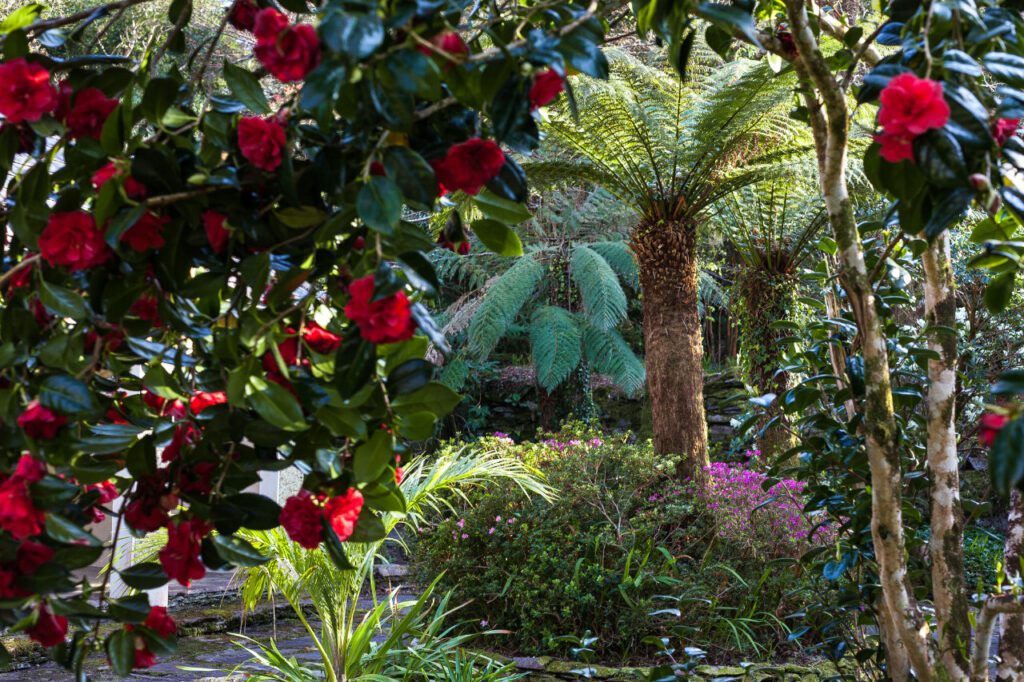
The Palm and Succulent Garden
Positioned to the front of the house, and only developed in the past 2 years as prior to then there was practically no plant from the Palm and Succulent families. With the extensive rainfall in Kells, the removal of the heavy peaty soil was imperative to give these plants a chance of survival from the extreme wet, especially in winter. To date there has been around 200 tonnes of rock imported from a local quarry to augment the existing rock bed and faces.
In July 2007 a large palm tree was imported from Chile and planted in the new bed. It is a Jubaea chilensis and weighs 11 tonnes (including the rootball). It has a clear trunk of 7.5 metres. It is now showing signs of new growth with green leaves emerging from the centre, having survived the 2 harsh/extreme winters of January and December 2010. It is currently the largest palm tree in Ireland.
The dedicated horticulturalist may recognise Yuccas, Dasylirions, Aeoniums, Xanthorrhoea, Agaves, Aloes, Puya, Aeoniums, Furcraea, Ocahgavea and Fasicularia among the collection number of other mature Palms.
The Ladies Walled Garden
Set over three levels, has many unique features. This area offers a sheltered environment to nurture tender exotics and experiment with new species. Traditionally, walled gardens are almost austere and are laid out symmetrically, with an area containing vegetables to supply the household. Happily, this is not the case at Kells, where the pathways lead off in all directions, quickly melding into the surrounding landscape.
The plants are exclusively decorative and there are some fine well-established specimens discernible to the educated visitor.
Some examples of plants to see here are, once again, very large specimens of Dicksonia antarctica, various other ferns, the palm, Juania australis, the massive Eucalyptus globulus and fine mature stands of the orange barked Chilean Myrtle, Luma apiculata.


The Primeval Forest
The undoubted centrepiece of Kells Bay Gardens, is an extensive collection of tree ferns. Many of these ferns were planted in the mid-19th century after being brought over from Australia. They have adapted to and colonised their new home so completely that Antipodean visitors feel at home there.
To see the Primeval Forest, take the Red Walk through the Ladies Walled Garden and this will naturally lead you through to the Primeval Garden. Don’t necessarily follow the way makers as there is so much to see here.
Once again there were losses of some of the more exotic tree ferns, primarily Cyathea species, in this area in the winters of January and December 2010. Thankfully the huge stands of massive trunked Dicksonia antarctica came through unscathed.
Other ferns worth noting are Dicksonia fibrosa, Blechnum discolor, Blechnum fluviatile, Blechnum nudum, Blechnum tabulare, Polystichum vestitum, the epiphytic fern Microsorum diversifolium, Lophosoria quadripiannata amongst others.
However the most impressive of the ferns in the Primeval Forest has to be the stand of Blechnum magellanicum a wonderful Chilean species.
Waterfall Way
Lorem ipsum dolor sit amet, consectetur adipiscing elit. Sed ut mi iaculis, posuere dolor a, tincidunt velit. Orci varius natoque penatibus et magnis dis parturient montes, nascetur ridiculus mus. Suspendisse molestie, ante sit amet dapibus egestas, nunc orci pulvinar tellus, id pretium diam eros at enim. Donec ultrices nulla et sapien hendrerit efficitur. Donec imperdiet ut odio at egestas. Maecenas convallis gravida egestas. Vestibulum ultricies laoreet tellus, aliquet vulputate ligula varius vel. Duis id elit vel nibh tristique pulvinar. In at rhoncus ipsum. Cras eget neque in erat tempor fermentum ut ac purus. Donec lobortis metus orci, ut mollis orci aliquam et. Duis iaculis ex ac felis malesuada faucibus. Nunc ultrices sed est non aliquet. Fusce in viverra dolor.
Mauris vehicula ullamcorper mollis. Praesent auctor nec nibh at consequat. Interdum et malesuada fames ac ante ipsum primis in faucibus. Cras ut congue augue. Pellentesque lacinia urna in orci tincidunt, et iaculis erat commodo. Class aptent taciti sociosqu ad litora torquent per conubia nostra, per inceptos himenaeos. Ut et hendrerit lectus, id tincidunt neque. Aliquam pellentesque, libero vitae tristique consequat, odio massa auctor lectus, nec malesuada odio mi in risus. Integer tortor arcu, iaculis auctor metus nec, ultrices consequat arcu. Curabitur vitae turpis vitae purus elementum placerat fringilla sed dolor. Etiam sed vestibulum massa, vitae blandit velit. Duis libero turpis, interdum sed dignissim in, rutrum non magna.
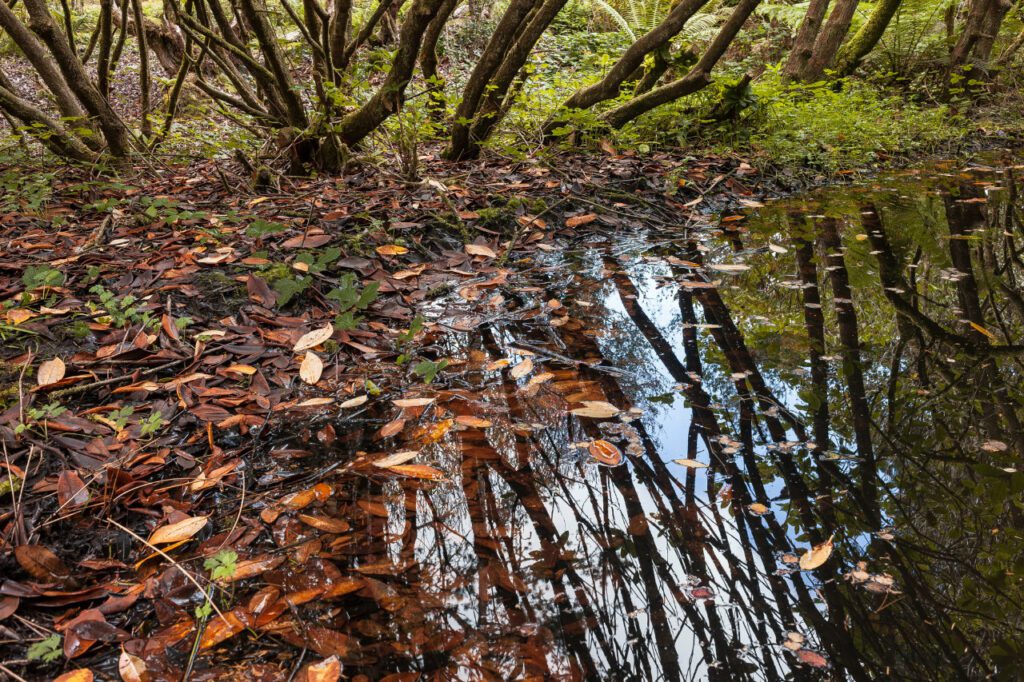

The Bamboo Glade
is incorporated as part of the Red Walk. After leaving the Primeval Forest, you will be taken past the plant nursery, where you will see a White Way Marker, taking you through the Bamboo Glade and back again to the main Red Walk.
In 2007, the Bamboo Glade was begun. This involved preparing the ground for planting and laying hundreds of metres of root barrier to curtail the spread of these plants in future years took a number of months. A planting programme was implemented in August 2007 which included over sixty rare species of bamboo, the majority of them Asian, with some South American species. With their colour, variety and growth they make a wonderful addition to the flora of Kells.
Some examples of the Bamboos planted are Borinda papyifera, Chusquea breviglumis (= Ch. gigantea), Fargesia denudate, Himalayacalamus hookerianus, Pseudosasa japonica ‘Tsutsumiana’, Sasa kurilensis ‘Shiroshima’, Shibatea chinensis.
To locate most of these plants please visit the plant database.
After 4 years of growth the Bamboos are beginning to establish themselves. Despite the extreme cold of the two winters of 2009-10 and 2010-11, losses were minimal.
The Gunnera Pool
Lorem ipsum dolor sit amet, consectetur adipiscing elit. Sed ut mi iaculis, posuere dolor a, tincidunt velit. Orci varius natoque penatibus et magnis dis parturient montes, nascetur ridiculus mus. Suspendisse molestie, ante sit amet dapibus egestas, nunc orci pulvinar tellus, id pretium diam eros at enim. Donec ultrices nulla et sapien hendrerit efficitur. Donec imperdiet ut odio at egestas. Maecenas convallis gravida egestas. Vestibulum ultricies laoreet tellus, aliquet vulputate ligula varius vel. Duis id elit vel nibh tristique pulvinar. In at rhoncus ipsum. Cras eget neque in erat tempor fermentum ut ac purus. Donec lobortis metus orci, ut mollis orci aliquam et. Duis iaculis ex ac felis malesuada faucibus. Nunc ultrices sed est non aliquet. Fusce in viverra dolor.
Mauris vehicula ullamcorper mollis. Praesent auctor nec nibh at consequat. Interdum et malesuada fames ac ante ipsum primis in faucibus. Cras ut congue augue. Pellentesque lacinia urna in orci tincidunt, et iaculis erat commodo. Class aptent taciti sociosqu ad litora torquent per conubia nostra, per inceptos himenaeos. Ut et hendrerit lectus, id tincidunt neque. Aliquam pellentesque, libero vitae tristique consequat, odio massa auctor lectus, nec malesuada odio mi in risus. Integer tortor arcu, iaculis auctor metus nec, ultrices consequat arcu. Curabitur vitae turpis vitae purus elementum placerat fringilla sed dolor. Etiam sed vestibulum massa, vitae blandit velit. Duis libero turpis, interdum sed dignissim in, rutrum non magna.

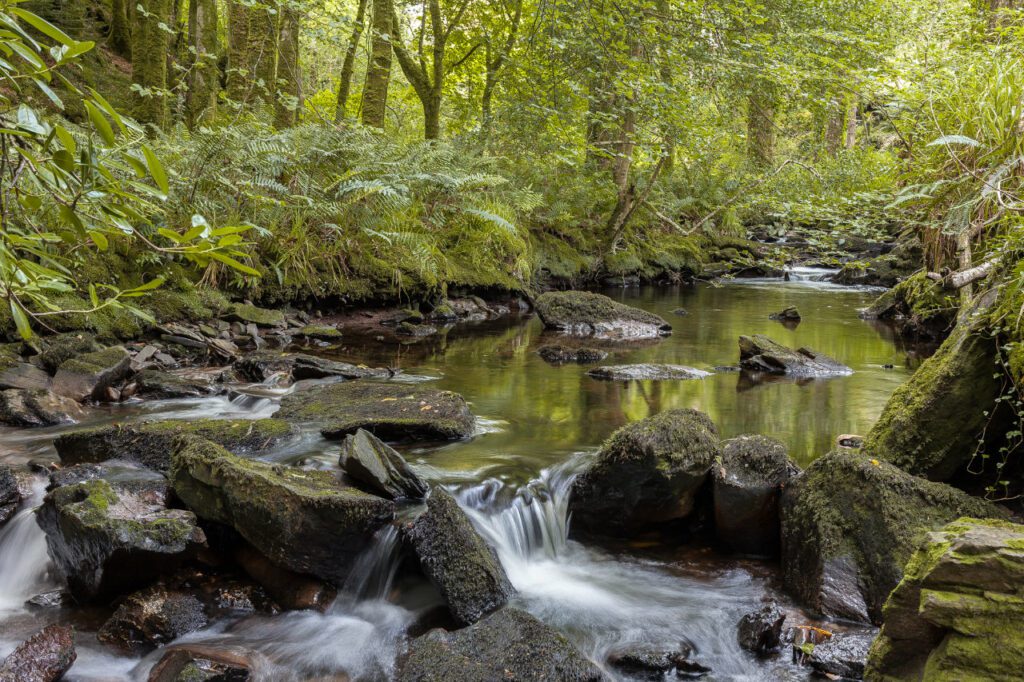
The River Ramble
Running uphill from behind the house, is a delightful stroll alongside a fast stream through native and imported species. This was originally the main entrance to what was then known as Holly Mount Lodge, back in the early days of the Blennerhassett era (1837). At that time it was named the Long Drive.
After exiting the Bamboo Glade and turning left towards the newly installed pond (2008), you will see a stand of the massive Giant Rhubarb,Gunnera manicata, which never fails to impress. Continue on from here to the start of the River Walk.
Some of the southern ferns here are spectacular in their health, with the vigour of their new growth most noticable when the unfurling croziers appear – a testament to the suitability of the local conditions. Some of the larger fronds are over 10 feet from tip to trunk. Dotted among the almost ubiquitous Dicksonia antarctica, particularly on the right-hand side of the pathway, are some wonderful examples of ferns from the Americas, Blechnum and Lophosoria, now currently acclimatising well to their new home.
At the top of the River Walk, there is a newly installed trail will take you back on another route, The Cliff Walk.
The Cliff Walk
Continuing along the River Walk, you will find yourself on the newly installed Cliff Walk. This was completed in the winter of 2009/2010 by Coillte and formally opened by Ronnie Delany on Friday 23rd April 2010.
This is primarily a new route enabled by the clearing of tracts of the invasive plant Rhododendron ponticum supported by Coillte in works carried out in 2008. This pathway is new and planting are mainly recent ones however it opens up terrific new views of the mountains that surround the gardens (Foley’s Mountain and Cnoc na dTobar) on the early stage of the walk and of Dingle Bay later on.
There are a couple of benches conveniently located at prime viewing points. You will also find a White Way Marker that will direct you down to the viewing platform over the Gunnera Pond.
This vast new area will be used over time for planting of large areas in primarily Chinese (Yunnan Province) and South American flora.
Also the first of the Kells Bay Gardens Dinosaurs will greet you in this area, another creation by Pieter Koning from a fallen tree (2011).
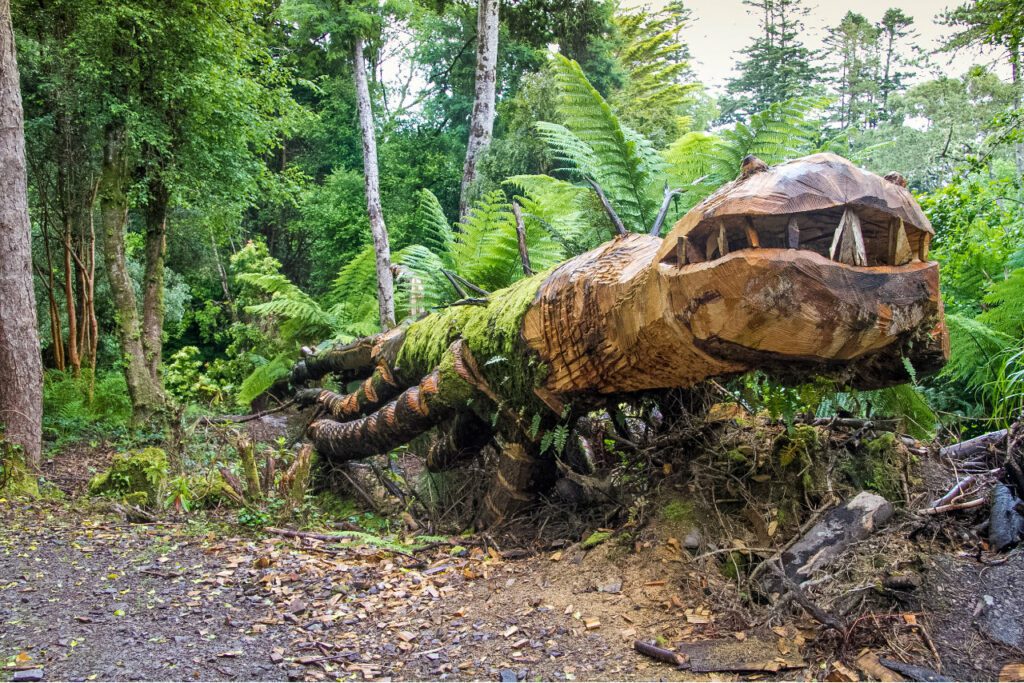
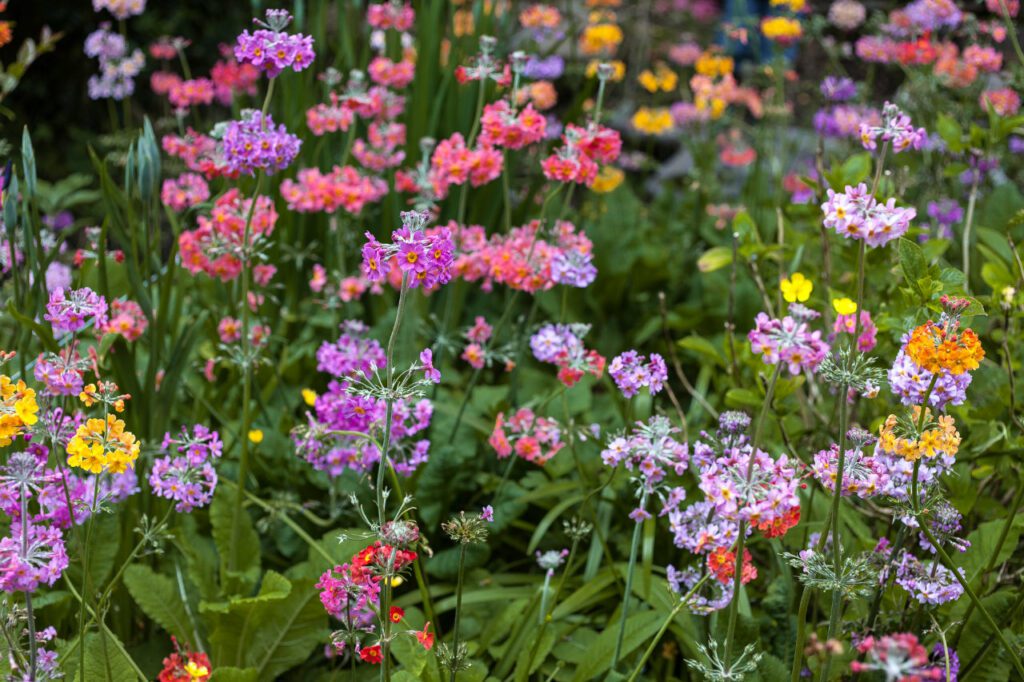
The Grasslands
As you enter the gardens you will see a large area to the left of the driveway that is presently not accessible to the public. The plan is to develop this area, creating a large pond/lake and a walkway leading down through the Palm & Succulent Garden, into the Grasslands, through into the moist forest of trees adjacent to the road and back to the Palm & Succulent Garden in a loop walk . This new walk will be named the Blue Walk.
Kells Bay House & Gardens
GPS Co-ordinates: Lat: 52.02306° Long: -10.10017° / Eircode V23 EP48
Coming from Killarney / Killorglin:
Drive towards Killorglin, following the brown tourism signs for the ‘Ring of Kerry’.
Continue through Killorglin on the N70 heading in the direction of Glenbeigh and Caherciveen.
Approximately 13km after Glenbeigh is a right turn, sign posted Kells Bay House & Gardens. Take this turn.
Follow this road for 1.5 km till you reach a junction, take the right turn also signposted Kells Bay House & Gardens.
800 metres down this road on the right hand side is the entrance for Kells Bay Gardens.
Coming from Caherciveen:
Head towards Glenbeigh and Killorglin, approximately 9 km from Caherciveen is a left turn signed Kells, take this road.
Approximately 3 km down this road is a left turn, signposted Kells Bay House & Gardens, take this road.
800 metres down this road on the right hand side is the entrance for Kells Bay Gardens.
